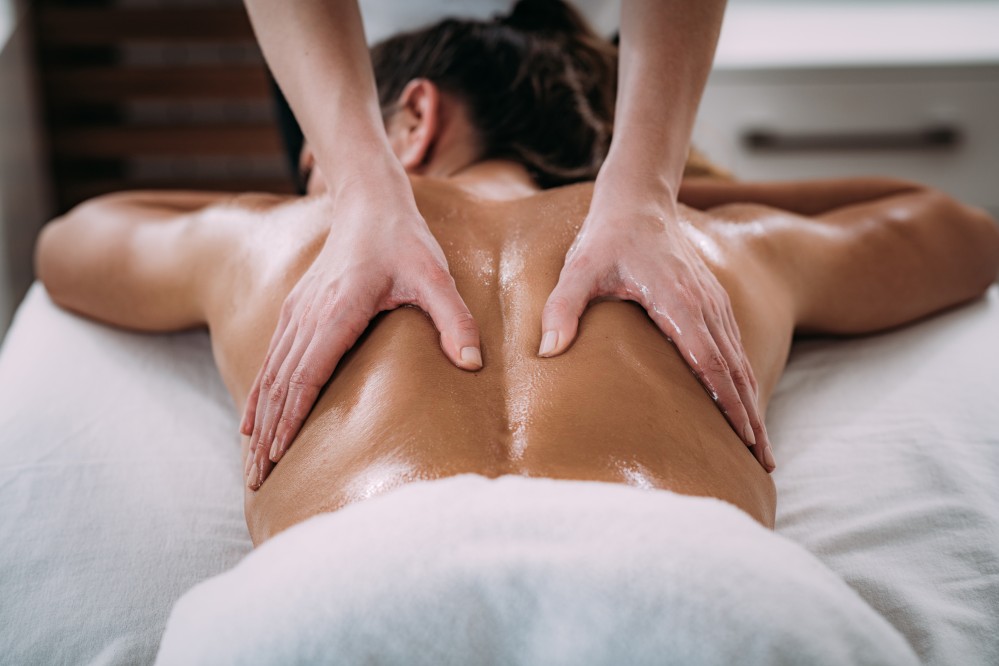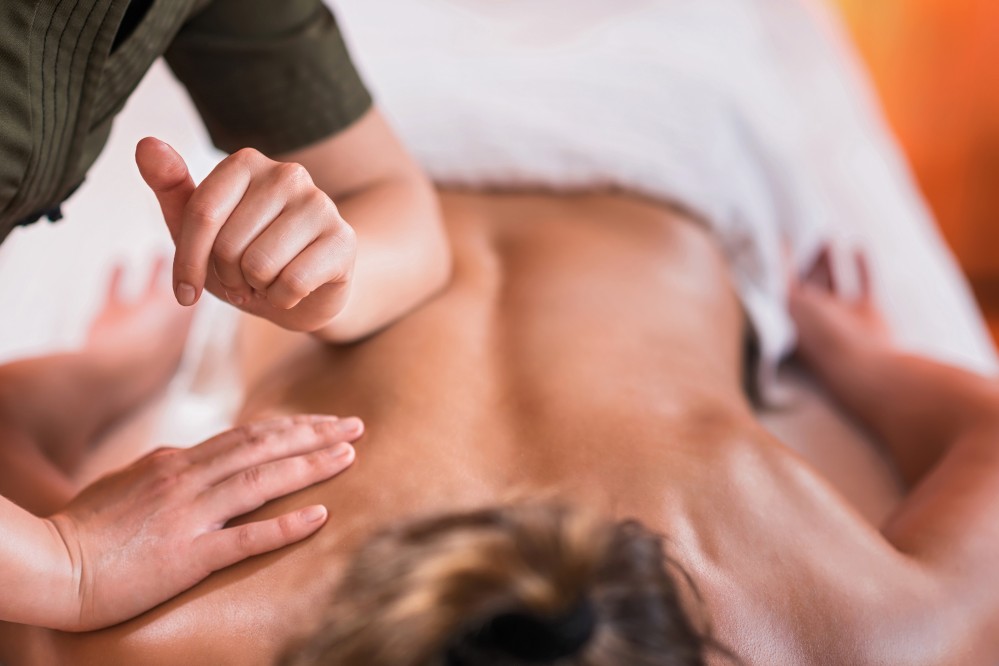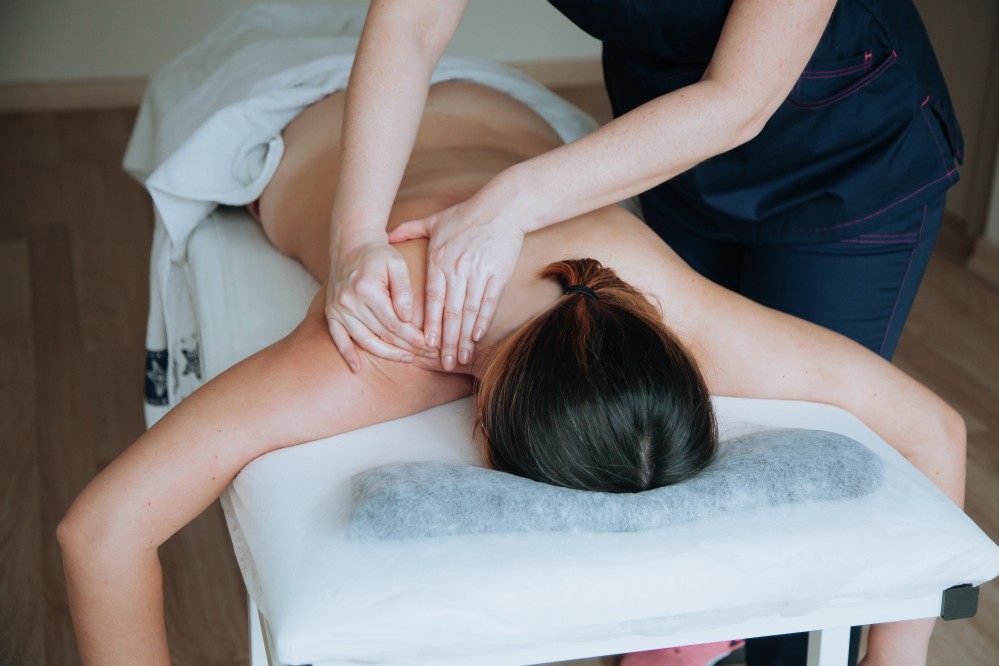You might believe that the only thing you can do if you’re feeling stressed and sore is to take some over-the-counter painkillers and get through the day. What if we told you that there’s another way?
Massage therapy is an excellent tool for increasing relaxation, reducing pain, easing muscle tension, and more. Learn everything you need about the common types of massage therapy and their benefits through our thorough guide.
What Is Massage Therapy?
Massage therapy uses various degrees of pressure and movement to manipulate the body’s soft tissues, such as muscles, tendons, ligaments, and skin. It is typically performed by a massage therapist and is often used as a treatment for multiple medical conditions.
Some of the classic benefits of massage therapy include:
- Reduces muscle and joint pain and tension
- Helps reduce stress levels
- Improves the body’s immune function
- Induces a state of relaxation
7 Different Types of Massage Therapy
There are many types of massage therapies out there, each achieving different results. In this part, we will answer all your questions related to massage therapy, including “What type of massage is best for the first time?” and “What are the types of massage therapy specialties?”. Depending on what issues you’re trying to target, here are seven massage therapies you could benefit from.
Swedish Massage

Swedish massage is a full-body massage usually preferred by people who are new to massages or are sensitive to touch. During the massage, the therapist will perform various strokes. The standard massage strokes include:
- Effleurage (gliding) strokes
- Petrissage (kneading) strokes
- Friction
- Tapotement (percussive) strokes
- Vibration
These movements help warm the muscle tissue, improve circulation, release tension, break up muscle knots, and lengthen muscles. The Swedish massage techniques can vary by continuity, depth, direction, excursion, pressure, intention, rhythm, duration, and speed.
Asian Bodywork
Asian Bodywork Therapy (ABT) uses traditional Asian techniques of pressure, movement, and manipulation to treat the body’s energy channels and restore and balance the flow of energy in the body. Its goal is to promote, repair, and sustain harmony between energy, essence, spirit, blood, and body fluids.
Asian bodywork encompasses a wide variety of treatments such as cupping, gua sha (pronounced gwah-sha), shiatsu massage, acupressure massage, tuina (pronounced twee-nah), and Thai massage to name a few.
ABM uses structured touch techniques and an understanding of the patient’s condition to provide healing benefits. The therapist uses their hands to touch, press, and hold specific acupoints on the body, as well as stretching. Additionally, ABM may also involve the use of medicinal plant foods, heat or cold, and recommendations for diet and exercise.
Neuromuscular Therapy & Deep Tissue

Neuromuscular massage or trigger point therapy seeks to reduce stress and release tension in the trigger points. This is done by placing firm pressure directly over the tight tissue for 30 seconds to 2 minutes.
The use of trigger point massage therapy can help patients achieve better posture and spine support by releasing tight muscle tissue(s) and improving muscular balance. Because the muscular tissue around the joints is in better health, the range of motion of the joints is also enhanced.
On the other hand, deep tissue massage is often used to break up scar tissue that forms in muscles from injury, poor posture, inflammation, and repetitive motion by applying deep pressure to release any muscle tension. The technique involves slow movements with added pressure applied by the fingers. The time duration of this massage is usually 60-90 minutes, and it’s one of the best options if you like massages that involve pressure on the skin.
Myofascial Release
Think of myofascial as a network of tissues that connects muscles, joints, and bones as well as supports and keeps your organs in the right place. So, myofascial release therapy is about easing the pain in the myofascial tissue.
During a myofascial release massage, the therapist feels your myofascial tissue for particularly stiff and tight areas. These are the places that cause you to feel pain, even if it feels like it radiates to other areas. While other types of massage therapies may be relaxing, myofascial release therapy is often intense and can even feel a bit painful since it stretches the myofascial tissue and eliminates knots.
Lymphatic Drainage

Every day our bodies build up toxins and unwanted waste. Lymphatic drainage massage is the massage technique that stimulates lymph flow throughout the body. This massage technique involves long strokes to move the lymph fluid so that organs can process and filter it from the body. The rhythmic hand strokes re-stimulate a slow lymphatic system and can also help one build a strong immune system.
This type of massage therapy is most effective for removing bacteria and toxins from the skin, as well as for minimizing fine lines, wrinkles, and bags under the eyes. Additionally, it may assist in reducing any sinus swelling, congestion, or pressure. Such a therapy opens your lymphatic system, boosts collagen production, and enhances lymph flow.
Prenatal & Maternity Massage
A prenatal and maternity massage is a gentle treatment performed to reduce the discomforts and pains of pregnant mothers while encouraging deep relaxation. This massage therapy can be powerful for many pregnancy issues, including anxiety, lack of sleep, and back and leg pain. Additionally, a prenatal and maternity massage increases the ‘feel good’ hormones serotonin and dopamine and decreases the stress hormone cortisol, helping pregnant mothers relax.
Reflexology
Reflexology is based on the theory that reflex points on the hands, feet, and ears are linked to different body parts—these points are then stimulated to release tension and increase circulation to the connected organ or area of the body.
Reflexology may also work by stimulating the release of endorphins (the feel-good brain chemicals), this way reducing pain and diminishing the negative effects of stress. The benefits of reflexology include decreased anxiety and stress, headache relief, increased circulation, and more.
The Benefits of Massage Therapy
Massage therapy is a part of integrative medicine and is increasingly offered along with standard treatments for various medical conditions and situations.
Massage therapy can help:
- Reduce stress and increase relaxation
- Reduce pain, muscle soreness, and tension
- Improve circulation, energy, and alertness
- Lower heart rate and blood pressure
- Improve immunity
Additionally, massage therapy can also help alleviate conditions such as:
- Anxiety
- Digestive disorders
- Headache
- Insomnia
- Back pain
- Myofascial pain syndrome
- Nerve pain
- Soft tissue strains
- Sports injuries
- Temporomandibular joint pain
What Type of Massage Therapy Is Right for You?
Massage can be considered a measure of physical, mental, and emotional improvement. You can experiment with different types of massage and therapists to find what options work best for you.
So whether you have back pain or sports injuries or simply need some pampering, massage therapy may be just what you need. Nonetheless, review your medical history, pain level, and comfort with your massage therapist before diving in.
How Much Does Massage Therapy Cost?
While the average cost for massage therapy is $100 per session, the price range will change depending on the type of massage, its length, and where you are located. You should always seek estimates from massage therapists before making an appointment.
Massage prices:
- National average cost: $100 per session
- Typical cost range: $85-$125 per session
- Low-end cost range: $65-$75 per session
- High-end cost range: $145-$180 per session
At our clinic, we offer a variety of massage options for your relaxation and wellness needs. Here are our prices:
- Professional Massage – 110 Minutes $108
- Professional Massage – 80 Minutes $86
- Student Massage – 50 Minutes $35
- Professional Massage – 50 Minutes $65
Discover the Power of Massage at AIAM!
More and more people are choosing massage therapy because it provides relaxation, manages pain, and treats a broad spectrum of conditions. If you want to try massage therapy or explore the massage therapy career, our massage therapists use a range of stress-relieving and wellness-preserving techniques that you can greatly benefit from. Book your appointment today by clicking here!